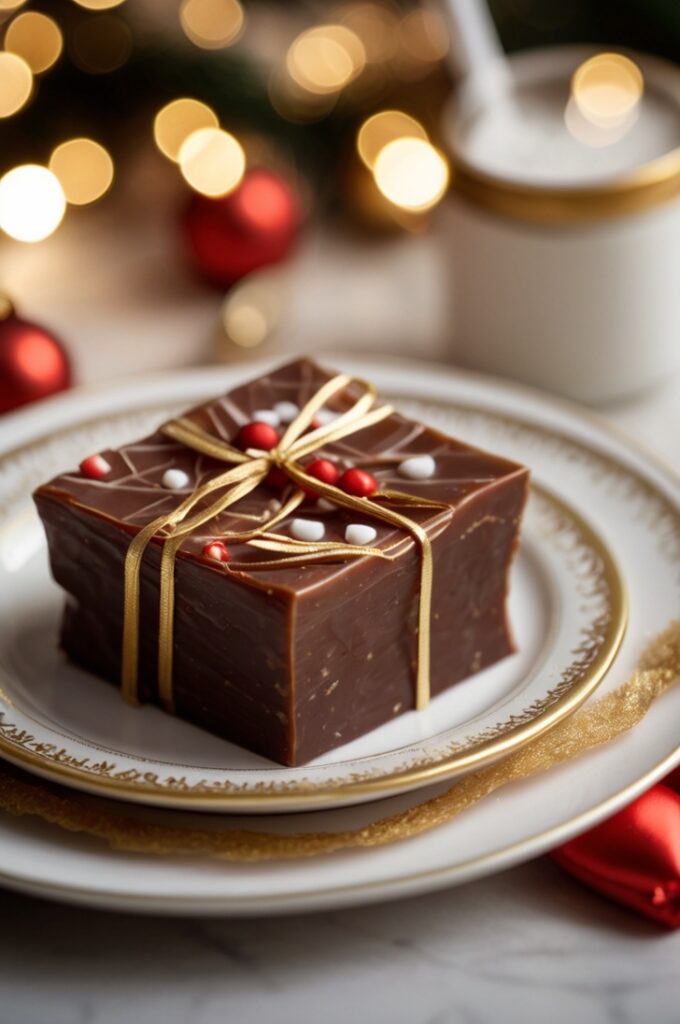Christmas Candy Recipe last December, I watched a 14-year-old pastry apprentice burn her fingerprints off pouring hot sugar too fast. She didn’t flinch. Just blinked, grinned, and said, “Guess I’m really making candy now.”
That’s the thing about Christmas candy. It’s not just sweet it’s chaotic, precise, messy, nostalgic, and a bit dangerous if you’re doing it right. It’s holiday alchemy. And when it’s done well? It disappears from the counter like magic. Before Aunt Rita even shows up with her tin of fudge bricks.
This isn’t your average “throw it in a pot” Pinterest recipe. This is professional-level candy work where timing, temperature, and taste matter more than you think.
That’s the thing about Christmas candy. It’s not just sweet it’s chaotic, precise, messy, nostalgic, and a bit dangerous if you’re doing it right. It’s holiday alchemy. And when it’s done well? It disappears from the counter like magic. Before Aunt Rita even shows up with her tin of fudge bricks.
This isn’t your average “throw it in a pot” Pinterest recipe. This is professional-level candy work where timing, temperature, and taste matter more than you think.
Let’s make a batch that actually tastes like Christmas.
What Are We Making and Why It’s Worth Your Time

We’re talking about a buttery peppermint brittle layered with dark chocolate and speckled with crushed candy canes. Thin, crisp snap. Rich, crackling texture. Sweet heat from the mint.
It’s like peppermint bark but evolved.
This isn’t just beautiful for gifting. It’s the kind of candy that holds up to shipping, doesn’t weep in humid climates, and tastes even better on day two. We’re going to walk through how to do it right, with real insight on technique.
Ingredients & Substitutions
Sugar, granulated (2 cups)
– Cane sugar preferred. Beets work, but flavor’s a bit flat. Avoid superfine it burns quicker.
Unsalted butter (1 cup, 2 sticks)
– European-style has more fat, better snap. Salted can work, just cut added salt.
Water (1/4 cup)
– Just tap. Don’t overthink this one.
Light corn syrup (1/3 cup)
– Prevents crystallization. Golden syrup works too. Honey? Risky it browns faster, but doable.
Salt (1/2 tsp)
– Fine sea salt. Don’t use flaky salt here, it doesn’t dissolve evenly.
Baking soda (1 tsp)
– This is what gives that puff and crunch. Make sure it’s fresh.
Peppermint extract (1 tsp)
– Not mint extract. Not spearmint. Peppermint. Oil-based if you can find it stronger and cleaner.
Dark chocolate (8 oz, 60-70%)
– Good couverture if you’ve got it. Otherwise, chop a decent bar. Don’t use chips they’ve got stabilizers.
Candy canes, crushed (3–4 regular size)
– Bash ‘em in a bag with a rolling pin. Don’t blend dust just melts.
Substitutions?
Vegan? Use plant butter with at least 80% fat.
Corn allergy? Sub glucose syrup (professional confectioners’ supply stores carry it).
Dairy-free chocolate? Choose couverture without milk solids Callebaut and Valrhona make solid options.
Step-by-Step Instructions
1. Prep first. Do not wing it.
Line a half-sheet pan with parchment. Butter the edges. Have your baking soda and extract measured out in separate ramekins. Once you hit 300°F, you’ll have about 15 seconds to move.
2. In a heavy-bottomed saucepan, combine sugar, water, corn syrup, salt, and butter. Medium heat. Stir gently until sugar dissolves don’t slosh it up the sides.
3. Once it starts boiling, stop stirring.
This is crucial. Stirring after this point invites sugar crystals to form gritty candy. Just swirl the pan gently if you see hot spots.
4. Clip on a candy thermometer.
Not negotiable. Go old-school glass or a fast digital probe with a pot clip. Target: 300°F (hard crack). That’s your finish line.
5. Watch for color.
At 280°F, it starts to amber. At 295°F, it smells toasted. Do not walk away here. Sugar burns fast and won’t forgive you.
6. Off heat. Immediately stir in baking soda.
It’ll foam and puff. That’s the airiness you want. Then peppermint extract quick but steady. The fumes will hit your sinuses like winter wind.
7. Pour fast onto the lined tray.
Tilt to spread it thin. Don’t touch with a spatula unless it’s oiled it’ll stick and drag.
8. While it’s hot, scatter chopped chocolate over the surface.
Let it melt for a minute. Then gently swirl or spread. Jagged texture’s great. Rustic is fine. We’re not making truffles.
9. Top with crushed candy canes.
Do this before it sets fully, or they’ll bounce right off.
10. Cool at room temp, at least an hour.
Don’t fridge it it’ll sweat. Once set, snap into shards.
Technique & Candy Science
Why baking soda?
It reacts with the acidic sugar syrup to release CO₂. That’s what gives the candy lift. Without it, brittle goes glassy and sharp not crunchy.
Why 300°F?
It’s the hard crack stage. Anything less, and your candy will be chewy in the center. Anything more, and it starts to taste like burnt toast. Invest in a thermometer you trust. You need it.
Why peppermint after heat?
It’s volatile. Add it too early, and the heat kills the flavor. Add it after you pull the pan just as the bubbles calm.
Candy won’t set?
Humidity’s the silent killer. Sugar’s hygroscopic pulls moisture from the air. If your kitchen’s humid, use a dehumidifier or crank the AC. Never make brittle in the rain.
Tools that matter:
Heavy-bottomed saucepan (cheap pans scorch fast).
Silicone spatula (for stirring pre-boil only).
Thermometer. Candy mat or parchment. Sharp chef’s knife for breaking, not serrated.
Serving & Pairing Suggestions

Don’t just toss shards in a jar.
Layer brittle in cellophane, tied with a ribbon, tucked inside a box lined with wax paper. Keeps it crisp. Looks like you planned ahead even if you didn’t.
Pairings?
Serve alongside espresso for bitterness contrast.
Crush into vanilla ice cream for texture bombs.
Gift with a smoky Lapsing Slouching tea it brings out the chocolate’s depth.
Or do what I do stack it on a cake like edible stained glass. Your pastry chef friends will silently curse you. That’s how you know it’s working.
FAQs About Christmas Candy Recipe
1. My candy turned out sticky. What happened?
Humidity likely sabotaged you. Always make brittle in a dry environment and store it in airtight containers with silica packets if needed.
2. Can I double the batch?
Yes but use a larger pan. And be ready to stir fast when adding baking soda big batches puff aggressively.
3. Is peppermint extract the same as mint?
Nope. Mint is usually spearmint-forward. Peppermint gives that cold-breath-in-December blast.
4. Can I skip the chocolate?
Sure. But why would you? It balances the sweetness and rounds the texture. Still, the brittle stands on its own.
5. What’s the best way to store it?
Airtight tin, room temp, away from light and heat. Don’t refrigerate moisture will kill the snap.
Want to really master this? Make it three times. Once for practice, once for gifting, and once just for you. Because if you’re going to burn your fingerprints off for a candy… you should at least enjoy the first bite.
Would you like a printable version or a visual guide for this recipe?
Conclusion: What Makes This Candy Special
This isn’t bark. It’s not fudge. It’s crackly, loud, buttery, sweet, minty, and sharp. It snaps like a twig and melts like silk.
It holds texture. It keeps for weeks. And it feels hand-crafted even if you made it half-drunk in a sugar-sticky kitchen.
The tricks? Respect the temp. Don’t skip the prep. Use the right kind of mint.
When done right, this candy doesn’t just taste good it feels like a tiny rebellion against grocery store sameness.




